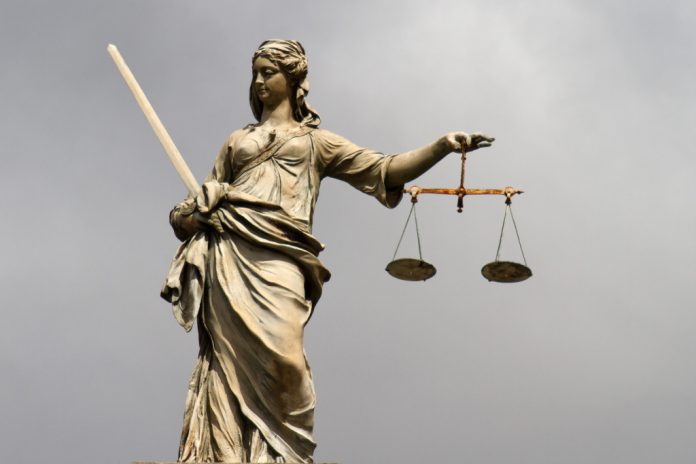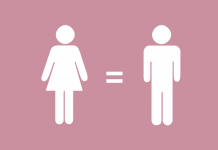This article is written by Kritika Garg from National Law University Odisha. This is an exhaustive article that explains certain landmark judgments on gender justice.
Table of Contents
Introduction
In a tradition-bound society like India which is entirely dominated by men, women’s participation in public life is on a rise. The law of the land treats men and women equally. However, even after the protection by law, women are still ill-treated in society. Violence against women exists in various forms such as rape, acid attacks, inequal treatment, etc. which not only violates their fundamental rights but also promotes gender inequality. Not only women but the LGBTQ community is also denied equality. While homosexuality is considered an illness, the LGBTQ community suffers from an extreme violation of human rights including violation of the right to equality and the right to live a dignified life. People belonging to the LGBTQ community are made to suffer from physical, social, and psychological violence which is motivated by the homophobic, transphobic, biphobic, and lesbophobic acts.
Atrocities against women and the LGBTQ community led to some landmark judgments in the history of Indian polity which were fought to provide justice to them and to upheld their Right to Equality and Right to live a dignified life as guaranteed under the Constitution of India.
This article focuses on some of those landmark judgments and how the judgments contributed to gender equality and justice.
Vishaka & Ors. v. State of Rajasthan & Ors.
Vishaka v. State of Rajasthan is a landmark judgment pronounced in 1997 by the Supreme Court of India. This case led to the enactment of certain guidelines to deal with cases of Sexual Harassment of women at workplaces.
Facts
Bhanwari Devi, a social worker from Rajasthan, was brutally gang-raped by six Gujjar men for stopping child marriage. Determined to get justice, Bhanwari Devi filed a complaint against the offenders. However, they were acquitted by the trial Court. Enraged by this, several women’s groups and NGOs came out to support Bhanwari Devi and filed a writ petition in the Supreme Court to fight against injustice. The writ was filed for the enforcement of fundamental rights of working women guaranteed under Article 14, Article 19, and Article 21 of the Constitution of India.
Judgment
The court observed that as per Article 14(2), 19(1)(g) and 21(4), every profession, trade, or occupation should provide a safe working environment to all the employees. A safe working environment is a basic requirement, unavailability of which violates the Right to live a dignified life guaranteed under Article 21 of the Constitution of India.
The Supreme Court in its judgment defined Sexual Harassment as an unwanted or uninvited action including:
- Physical touch or conduct; or
- Showing of pornography; or
- Use of sexually derogatory words; or
- Asking for sexual favours; or
- Any other unpleasant verbal or non-verbal conduct of sexual nature.
Further, the Supreme Court held that since there are no laws pertaining to sexual harassment in India, consideration must be paid to the International Conventions and therefore, the Court issued certain guidelines to be followed by the employers or any other responsible person in the workplace to ensure gender equality and safety of women at workplaces. Such guidelines were to be treated as law declared under Article 141 of the Constitution.
The following guidelines are meant to be followed until new legislation is enacted for the same:
- The employer should take preventive steps by notifying the definition of sexual harassment at the workplace.
- Such rules and regulations should be included which prohibit sexual harassment and impose penalties against the offenders.
- Steps should be undertaken to provide a safe working environment with proper health and hygiene facilities.
- In the case of sexual harassment, the employer should initiate appropriate actions against the offender by filing a complaint with the competent authority.
- Steps should be taken to ensure that the offender does not victimize the witnesses and the victim itself.
- A proper Complaint Committee shall be established in every employer’s organizations which should redress the complaints made by the victims within a reasonable time.
- The Committee shall be headed by a woman with half of its members as women.
- The Committee shall ensure the redressal of the complaint while the confidentiality is maintained.
- The Committee shall also include a third party, either an NGO or any other body to prevent any influence or pressure on the victim from the seniors of the organization.
Mary Roy v. State of Kerala
It is a landmark judgment of 1986 pronounced by the Supreme Court of India recognizing the rights of Christian women related to intestate successions.
Facts
Mary Roy, a widow who was staying at her father’s house, was continuously harassed and threatened by his brother because he wanted her to evacuate the property. However, with no other place to go, Mary blatantly refused to evacuate the place. Her brother claimed that the property belongs to him as per the Travancore Succession Act, 1916 (the Act) which recognized acquisition of the property through inheritance only.
Further, Section 24 of the Act provided that a widowed mother will get life interest in the property and the daughter will not have any right in the property after getting Stridhan.
Mary filed a case against his brother for her right in the property which was denied by the Lower Court. However, the High Court ruled in her favour providing an equal right in the property.
Even after getting a right, Mary was harassed by her brother for the property. Mary decided to move to the Supreme Court and filed a writ petition under Article 32 of the Constitution challenging the provision of the Act.
Judgment
The Supreme Court held that no personal law can be held above the Constitution of India.
The provisions of the Act discriminates against women and thus, violates the Right to equality guaranteed under Article 14 of the Constitution of India.
Further, the court held that Chapter 2 of part V of the Indian Succession Act, 1925 shall be applicable in cases of intestate succession even in the area of Travancore instead of the Travancore Succession Act, 1916.
The court reinstated the right of Mary in her father’s property and held that 1/3rd part of the property shall belong to the widowed mother, 1/3rd part to the daughter and the remaining 1/3rd part shall belong to her brother. The court held that there can be no discrimination between son and daughter in case of intestate succession.
Lala Singh v. State of Uttar Pradesh
This is a landmark judgement of 2006 in which the Supreme Court accepted a writ petition filed by a girl for her right to marry a person of her own choice by her own will.
Facts
In this case, a girl named Lata Singh was living with his brother and on attaining majority moved out of her house and married a guy of her own choice outside their caste and had a daughter with him. Her brother filed a missing complaint and framed the family members of the husband in the case and got them arrested. Furious with the inter-caste marriage, he even went to the husband’s house and bashed his mother and uncle.
The National Human Rights Commission and the State Women Commission intervened and got the accused out on bail. However, after the final report of the police, the court issued a non-bailable warrant against the accused. Lata Singh then moved to the High Court where the case remained pending. All this time she was forced to live at her brother’s house. Then, she finally moved to the Supreme Court and filed a writ petition under Article 32 of the Constitution of India claiming her right to marry a person of her choice by her own will.
Judgement
The Supreme Court stated that inter-caste marriage is not banned as per Hindu Marriage Act or any other law prevalent in the country. The caste system is not more than a hindrance in the process of the country’s growth and development.
The court held that the girl has the complete right to marry a person of her own choice and the charges framed against her husband and relatives are false. The court quashed the charges and provided police protection to the girl and her husband. The Court further ordered the authorities to initiate proceedings against her brother and to ensure that the girl and her family members are not harassed or threatened.
Roxann Sharma v. Arun Sharma
This is a landmark judgment of 2015 in which the Supreme Court held that the mother has the custodial right of a child under the age of five years.
Facts
Roxann Sharma and Arun Sharma both were married and had a child named Thalbir Sharma. However, due to the differences, they both filed an application for the dissolution of marriage and later on, a petition for custody of Thalbir under the Hindu Minority and Guardianship Act, 1956. While the case was pending in the court, Thalbir was staying with her mother who filed an application for interim relief seeking that the father should be restrained from getting custody of the child. The father also filed an application for custody.
The trial court ruled in the favour of the mother restraining the father from getting the custody, however, the High Court overruled the judgement of the trial court awarding the interim custody to the father.
The mother then moved to the Supreme Court challenging the order of the High Court. The mother claimed that the father was jobless as well as an addict whereas the father argued that the mother is bi-polar.
Judgement
The Supreme Court held that the custody of a child below five years of age must be given to the mother unless the father proves that it would hamper the upbringing of the child. The court pointed out that the burden to prove the incapability to raise the child lies on the father. In case, the mother is not suitable for the child’s custody then, the background of the father must be taken into consideration for the child’s custody. The court further held that the right of a mother over custody does not end after five years of age.
The Supreme Court ruled in favour of the mother and granted her the custody of her child. The Supreme Court also defined the terms Guardianship, Custody, and visitation in its judgement:
- Guardian: Guardian is the person with general care and control of a person.
- Custody: It refers to the care and control of a person.
- Visitation: It refers to the right of a non-custodial parent to spend time with the child.
Laxmi v. Union of India
Facts
A Public Interest Litigation was filed in 2006 by an acid attack survivor, Laxmi when the culprits were granted bail by the High Court. The main concern in the PIL was the easy availability of acid, no provisions for the betterment of the acid attack survivors.
Judgement
This case led to the enactment of Section 357-A in the Code of Criminal Procedure, 1973 which provides compensation to the victims of acid attack or their dependents. The Supreme Court announced a minimum compensation of 300000₹ to all the victims.
Section 357-C was also inserted in the CrPC which provides that all the hospitals be it a centrally run hospital, a state-run hospital or a private hospital shall provide the first aid to an acid attack victim free of cost.
Section 326-A and Section 326-B were also inserted in the Indian Penal Code, 1860 which deals with acid attacks exclusively.
Acid was declared as ‘Poison” and its sale was also banned which means it would no longer be available easily. The Court also passed an order stating that no hospital can refuse treatment to an acid attack victim. If any hospital refuses to treat an acid attack victim then the victim can initiate legal actions against the hospital.
Shayara Bano v. Union of India
Famously known as Triple Talaq case, this is a landmark judgement pronounced by the Supreme Court in 2017 holding the practice followed by the Muslim husbands of taking divorce by saying talaq thrice as unconstitutional. Known as talaq-e-biddat, the husband repudiates his wife by saying talaq thrice in a sentence without her consent. Further, the divorce under the practice was irrevocable.
Facts
The petition was filed by Shayara Bano whose husband repudiated her by following this practice. Married to Rizwan Ahmed for 15 years, he divorced her by saying talaq thrice. She filed a petition in the Supreme Court for holding the practice of talaq-e-biddat, Nikah Halala, and polygamy as unconstitutional since these practices are violative of Article 14, 15, 21 and 25 of the Constitution of India. Several other women also filed petitions challenging the practices with many NGOs and the Union Government supporting the cause.
Judgement
The apex court formed a 5 judge-bench to hear the petition. On 22nd August 2017, the bench with a ratio of 3:2 held the practice of triple talaq unconstitutional. The court held that the practice of triple talaq is not an essential religious practice under Islamic law, thus, holding it unconstitutional does not violate Article 25 of the Constitution.
As per Article 25 of the Constitution of India, the state cannot take away an essential religious practice from an individual. However, if the practice is arbitrary in nature and is not essential to the religion then the same does not fall within the ambit of the Article.
The Court observed that the practice is sinful as per the Hanafi School and is against the basic tenets of Quorum. It means that the very practice is against the Shariat and therefore against the law.
The Court further relied on its judgement in the case of Shamim Ara in which it was held that the practice of triple talaq is against the theology and law and the same cannot be upheld for the sole reason that it is being followed by the general public at large.
The court held that the practice is against the Right to equality enshrined under Article 14 of the constitution as the woman has no say in the divorce and is taken without her consent. The relation is ended at the whims of the husband which violates Article 14 and 21 of the Constitution. Therefore, the practice is unconstitutional.
Naz Foundation v. Government of NCT of Delhi
This is a landmark judgement in which the apex court held Section 377 of the Indian Penal Code, 1860 as unconstitutional for being in violation of Article 14, 15, 19 and 21 of the Constitution to the extent of criminalizing consensual intercourse between two adults.
Facts
Introduced during the colonial period, Section 377 of the Indian Penal Code, 1860 criminalizes ‘carnal intercourse against the order of nature’. The interpretation of the Section criminalizes all sexual activity except for the heterosexual penile-vaginal intercourse. A lawsuit was filed by an NGO named the Naz Foundation in Delhi High Court in 2001, seeking legalization of consensual intercourse between two homosexual adults. However, the suit was dismissed on the grounds of no locus standi. The foundation, then, moved to the apex court against the decision of the Delhi High Court. The Supreme Court referred the case back to the Delhi High Court stating that the foundation has full legal right to file a petition in the case.
Judgment
The Delhi High Court decided in the favour of the Naz Foundation and struck down Section 377 to the extent of consensual intercourse between two homosexual adults for being in violation with Article 14, 15, and 21 of the Constitution. The Court observed that Section 377 was discriminatory towards the LGBTQ community and thus, violative of Article 14 of the Constitution. Further, referring to the Principle 1 (Right to Equality), Principle 2 (equal treatment) and Principle 5 (definition of discrimination) of the Equal Rights Trust Declaration of Principles on Equality, the Court observed that there is a dire need of including sexual orientation among the protected grounds of discrimination. The Court held that discrimination on the basis of sexual orientation is violative of Article 15 and Article 21 of the Constitution as well. Thus, Section 377 stands invalid. However, it is important to note that Section 377 is struck down only to the extent of consensual intercourse between same-sex adults. It means that non-consensual intercourse involving minors is still governed by the impugned Section.
Conclusion
The Right to equality enshrined under Article 14 of the Constitution of India is applicable to all genders equally. However, reality presents a dismal picture of discrimination towards women and the LGBTQ community. Denial of equality to women and the LGBTQ community has raised the need for gender justice.
The Supreme Court has played a crucial role in ensuring gender justice. Right to file writ petitions, PIL has provided a strong legal base for women and the LGBTQ community to fight for themselves and to ensure equal rights just like men. The Court has addressed certain issues, such as the issue of sexual harassment at workplaces, denial of right in property, acid attack, rape, etc. which are not only discriminatory but also really inhumane.
The active role of the judiciary has led to the formulation of such laws which not only protect women and the LGBTQ community from atrocities but also recognize their rights, thus, promoting gender equality and justice.
LawSikho has created a telegram group for exchanging legal knowledge, referrals and various opportunities. You can click on this link and join:
 Serato DJ Crack 2025Serato DJ PRO Crack
Serato DJ Crack 2025Serato DJ PRO Crack










 Allow notifications
Allow notifications



